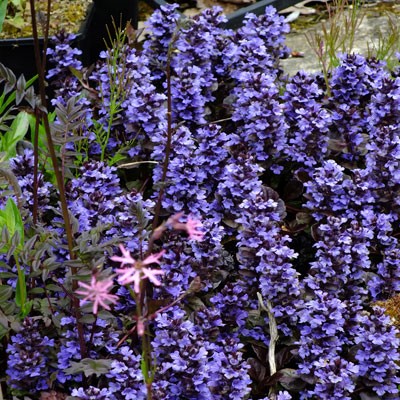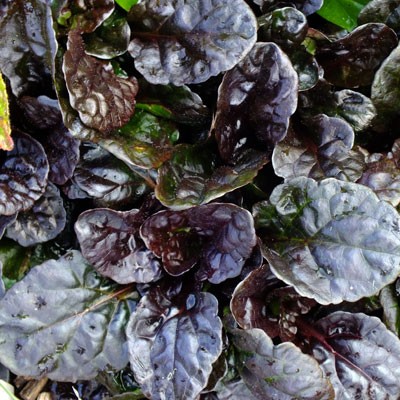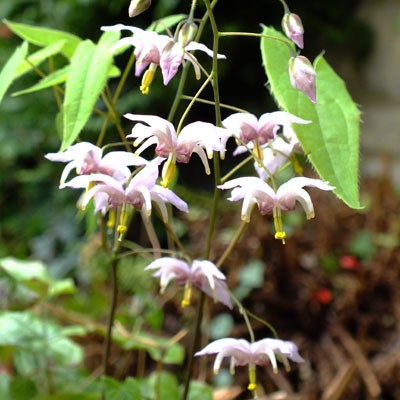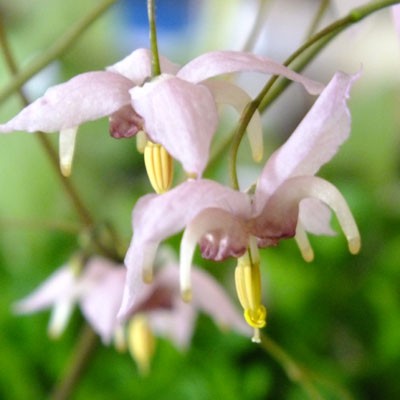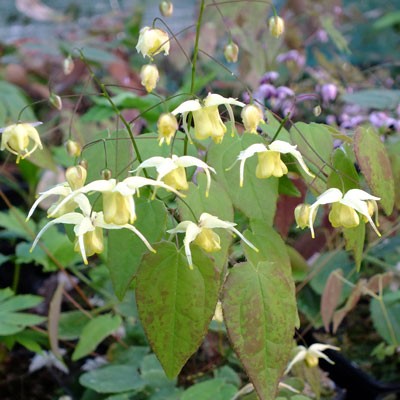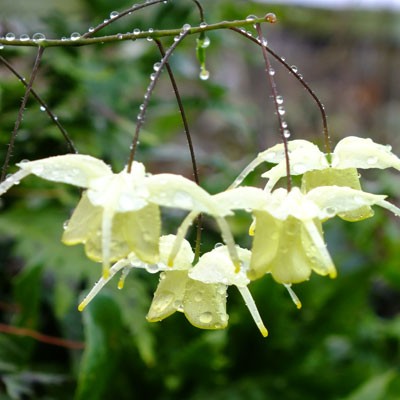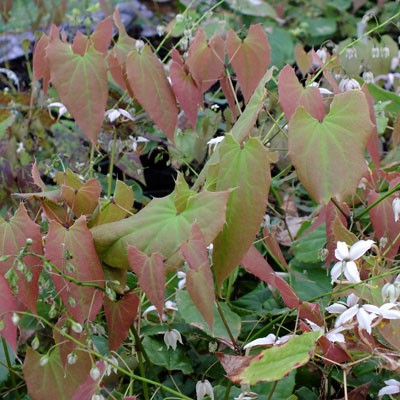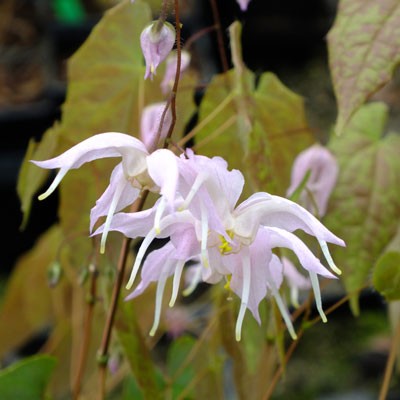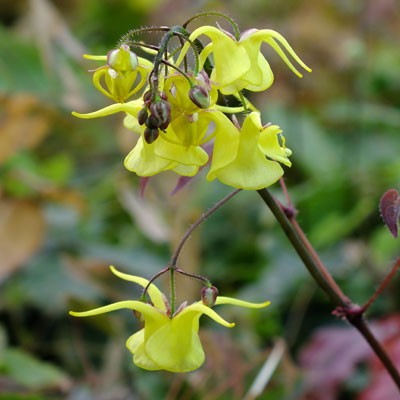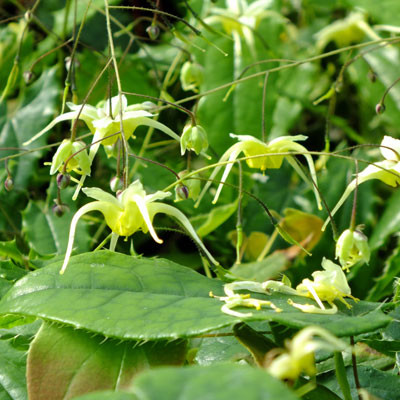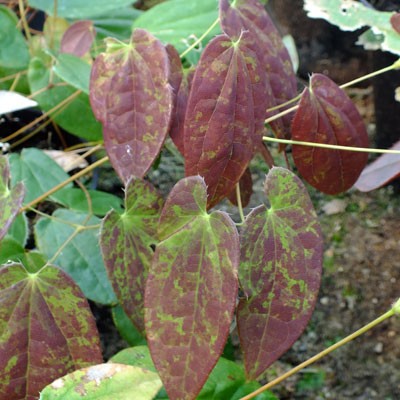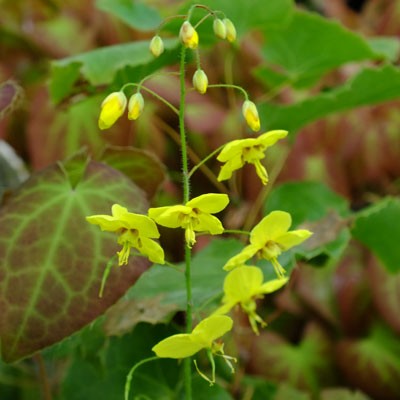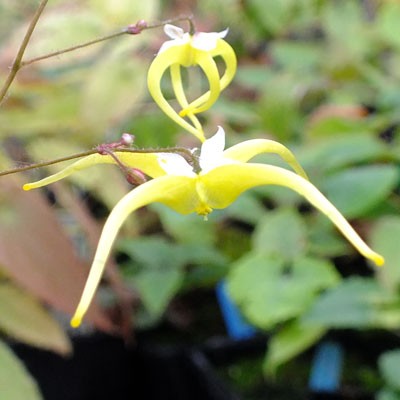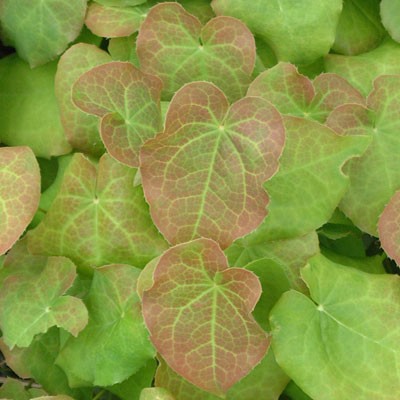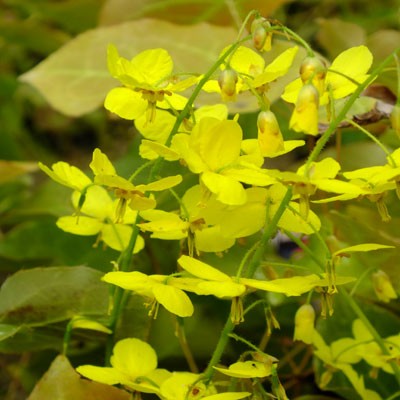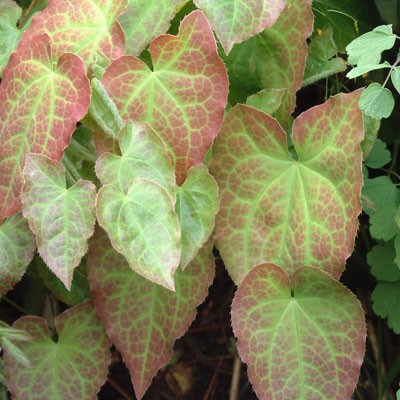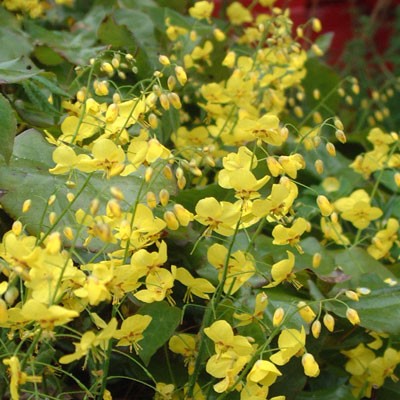- You cannot add "Aquilegia 'Koralle'" to the basket because the product is out of stock.
-
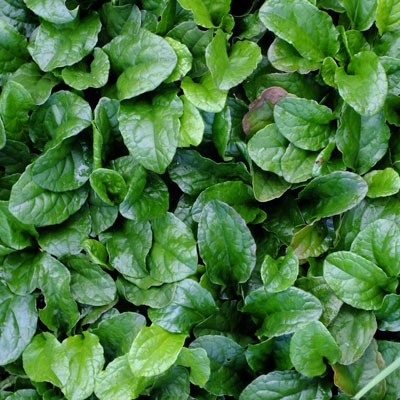

Potsize - 1L
Bugle. Lovely ground cover for a shady spot where the green leaves will make a dense carpet above which will stand dense, short spikes of pink flowers in the spring. Discount of 25p per plant for quantities of 3 or overLinks
Botanical Style Photographs
-
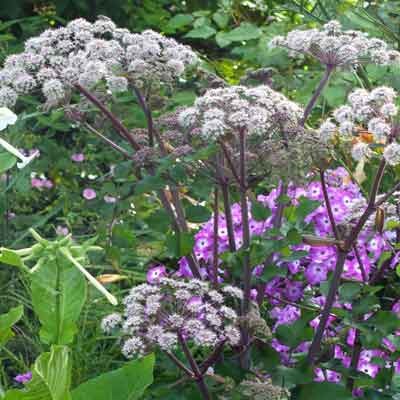
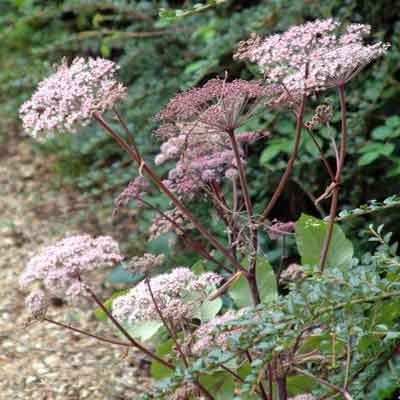

Bee Friendly
Potsize - 1L
Angelica sylvestris 'Purpurea' . Starting remarkably early in the year this plant pushes up fascinating glossy purple foliage, soon becoming an imposing architectural feature topped with a dense spherical head of pink flowers. In appearance not dissimilar to a more sturdy cow parsley, but with less air and more presence. Will seed about mildly. Likes a good moist spot. Discount of 25p per plant for quantities of 3 or overLinks
Umbellifers
-


Potsize - 1L
Anthriscus sylvestris 'Ravenswing'. Near black foliage in a dense ferny mound rising to dainty umbels of tiny white flowers. A striking form of Queen Anne's Lace with great poise and grace. 100cm. Any soil. Great to add a little fluff to the middle of a perennial planting or as a specimen plant with plenty of space so you can appreciate the beautiful form. Discount of 25p per plant for quantities of 3 or overLinks
Botanical Style Photographs
-


Potsize - 9cm
Aquilegia 'Yellow Star' (Star Series). An old cottage garden favourite and an excellent cut flower. Abundant display in late spring of long spurred two-toned lemon yellow flowers over fine blue-green foliage. Do not overcrowd the crown or allow other plants to flop over the foliage. 60cm. Full sun. HARMFUL IF EATENDiscount of 25p per plant for quantities of 3 or more of this variety, 50p for 10 of any AquilegiaLinks
Aquilegia Compared
-


Potsize - 9cm
Aquilegia 'Denver Gold' is a new version of an old cottage garden favourite granted a 'Plant Select' award for its robustness and an excellent cut flower. Abundant display in late spring of long spurred golden yellow flowers over fine blue-green foliage. Selected for its ability to rebloom after initial display providing it is dead headed with the possibility of blooms from May to September. Do not overcrowd the crown or allow other plants to flop over the foliage. 80cm. Full sunDiscount of 25p per plant for quantities of 3 or more of this variety, 50p for 10 of any AquilegiaLinks
Aquilegia Compared
-

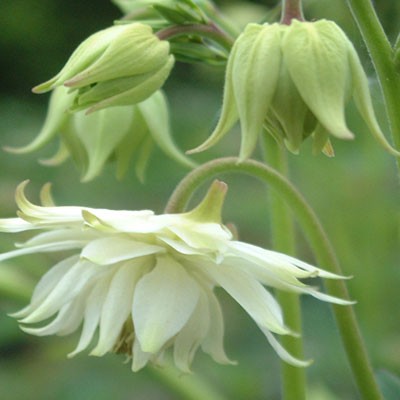
Potsize - 9cm
A beautiful form of Aquilegia clematiflora with exquisitely shaped, completely spurless flowers reminiscent of its name-sake. The flowers are shaded green in bud and retain green tips when open pure white. The leaves are fresh apple-green and erupt as early as February making a lovely foil for Spring flowers. 60cmDiscount of 25p per plant for quantities of 3 or more of this variety, 50p for 10 of any AquilegiaLinks
Aquilegia Compared
-

Potsize - 9cm
A fitting name for this richly claret coloured, very double. Spurless Aquilegia. A tall elegant variety with strong stems. 60-90cmDiscount of 25p per plant for quantities of 3 or more of this variety, 50p for 10 of any AquilegiaLinks
Aquilegia Compared
-
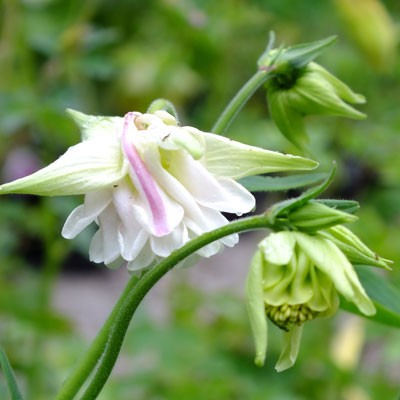
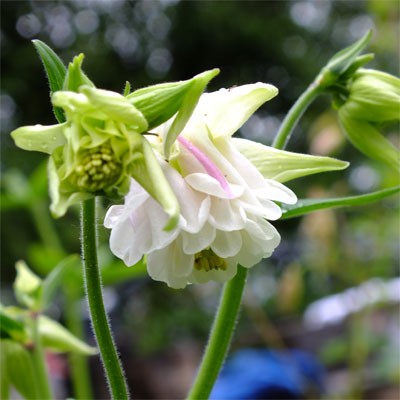
Potsize - 9cm
One of the spur-less Barlow series based around the plant originally found in the garden of Nora Barlow. This form has flowers that are a fully double, white with green tips. Would look good in a mixed cottagey border, hanging above paler mounds of flowers. 80cm. May-July. Best in light shade. HARMFUL IF EATENDiscount of 25p per plant for quantities of 3 or more of this variety, 50p for 10 of any AquilegiaLinks
Aquilegia Compared
-
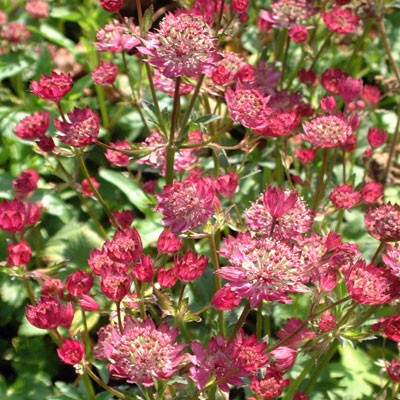
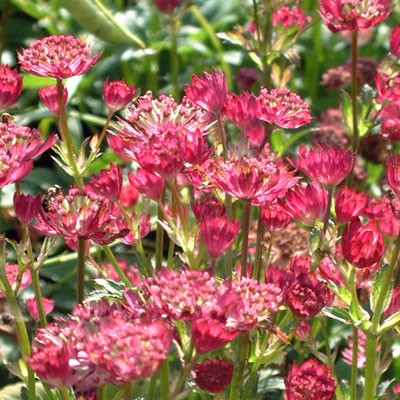
Potsize - 1L
A recently selected large flowered dark red masterwort. Tight clusters of maroon flowers are surrounded by beautiful ray florets. An interesting & beautiful plant happy in sun or part shade with some drainageLinks
Astrantia Compared
Astrantia in the Garden
Botanical Style Photographs
-
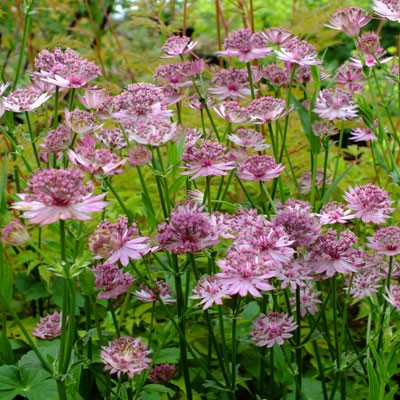
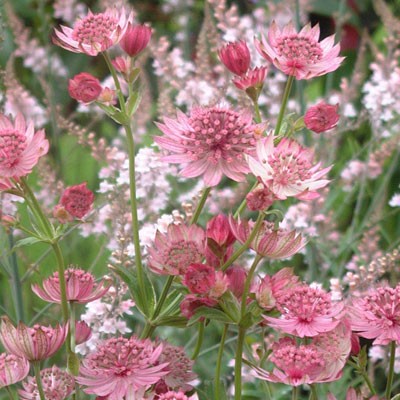
Potsize - 1L
Astrantia 'Roma'. Lovely mid pink cultivar of good constitution. The bracts form a shallow starry cup that is a shade lighter than the tight central pincushion of true flowers. 60cm. An interesting & beautiful plant Happy in sun or part shade with some drainageLinks
Astrantia Compared
Astrantia in the Garden
Botanical Style Photographs
-
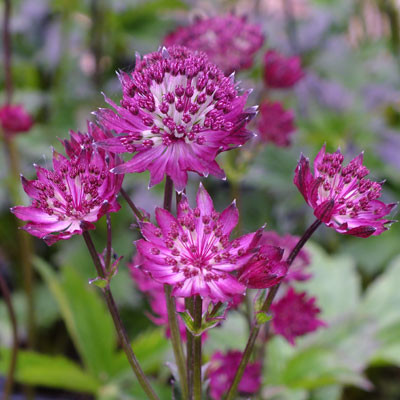
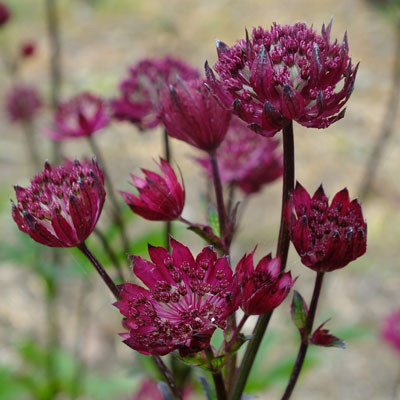
Potsize - 1L
We've seen it written that Astrantia 'Ruby Wedding' makes it inferior to some of the clonally propagated ones out there, but we've not found that the case at all. The ones we have are every bit as rich in colour as Ruby Wedding and Hadspen Blood. They don't have the dark staining leaves of the Gill Richardson Group, but for flower alone they are a lovely deep red with flowers of a very decent size. Ruby Wedding has its origins at the RHS Wisley where it was selected as a superior seedling in a sowing of Astrantia major subsp. major. Its bracts are of a good size and are strongly red to purple in hue. It is the parent of the seed strain known as Claret which may or may not live up to its parents reputation. It i svery similar to Hadspen Blood which has a similar bloodline but was selected by Nori Pope of Hadspen Gardens.Links
Astrantia Compared
Astrantia in the Garden
Botanical Style Photographs
-
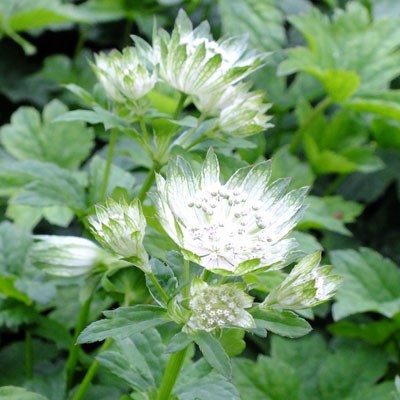
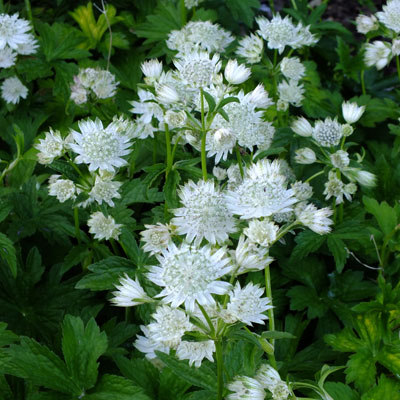
Potsize - 1L
A pure white, green-tipped, large flowered Astrantia from the 'Star' breeding program. We have examined this closely this year and it looks for all the world exactly like 'Shaggy', the excellent old variety selected by Margery Fish. It is a fine plant but we are as yet unsure why it merits its own name and PBR status.Links
Astrantia Compared
Astrantia in the Garden
Botanical Style Photographs
-

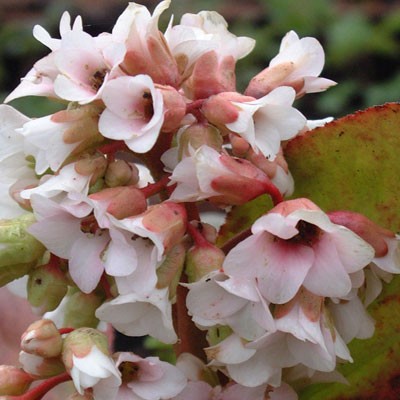
Potsize - 1L
Bergenia 'Bressingham White'. Praised for its robust stature and the freedom with which it produces both flower and leaf. Slowly spreading to form a good clump of large leaves with fine trusses of pure white flowers from March until May. Raised by Blooms and happy in both sun and part shade.Discount of 25p per plant for quantities of 3 or overLinks
Bergenia Compared
Botanical Style Photographs
-

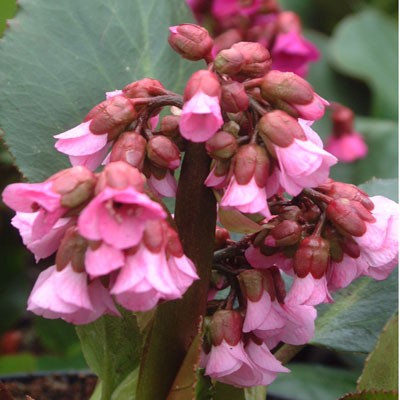
Potsize - 1L
Bergenia 'Eric Smith'. A handsome variety originally bred by Eric Smith at Hadspen House in Somerset and given to Beth Chatto who then named it in his honour. It has large, wavy edged crinkled leaves which take on plum and crimson tones in Winter. Sprays of bright mid-pink flowers top the foliage in Spring. Discount of 25p per plant for quantities of 3 or overLinks
Bergenia Compared
Botanical Style Photographs
-
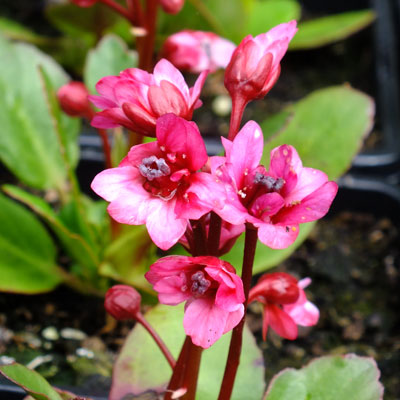

Potsize - 1L
This is a compact form of Bergenia but one that punches above its weight when it comes to flowering. Flowers are bright rosy-pink, carried on bright red stems and produced abundantly in March and April. Foliage is green for the growing season and turns deep beetroot in the Winter. 15-30cm tall. Discount of 25p per plant for quantities of 3 or overLinks
Bergenia Compared
Botanical Style Photographs
-
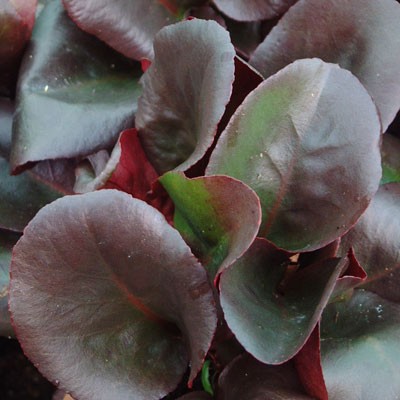
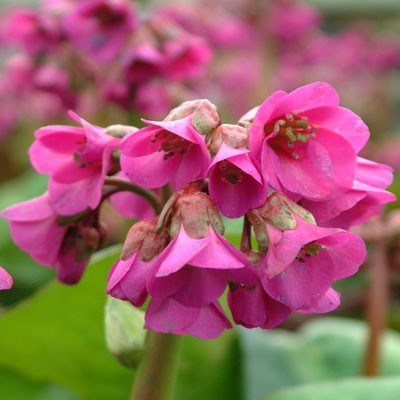
Potsize - 1L
Bergenia 'Overture' ('Eroica'). Handsome evergreen glossy green leaves are overlaid in Autumn onwards with shades of red and copper and can turn bright scarlet on exposed sun drenched leaves. One of the best for reliable winter leaf colour. The flowers are brightest magenta, produced from early to late spring. 30cm. Clumps are fairly compact in growth with flower spikes that are also relatively dense. Will even tolerate dry shade. Discount of 25p per plant for quantities of 3 or overLinks
Bergenia Compared
Botanical Style Photographs
-
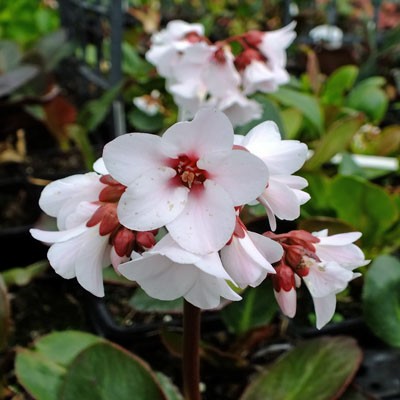

Potsize - 1L
An early flowering hybrid between B.ciliata and B.emeiensis nice, narrow, glossy green leaves, flushed red beneath and on the serrated margins. Like B.emiensis it has beautifully poised, shapely branched trusses of flowers, bell shaped at first becoming flared and wide separated with age. Also in common with B.emiensis its stems and calyxes are beautifully flushed with a pinky orange. The blooms are subtly shaded palest pink at first - just a suggestion of pink on a pure white, but as they age the central flush gradually grows until it is completely suffused rose-pink. A delightful but little known hybrid that requires a sheltered position away from the coldest winds. Bred by Robin White.Links
Bergenia Compared
Botanical Style Photographs
-
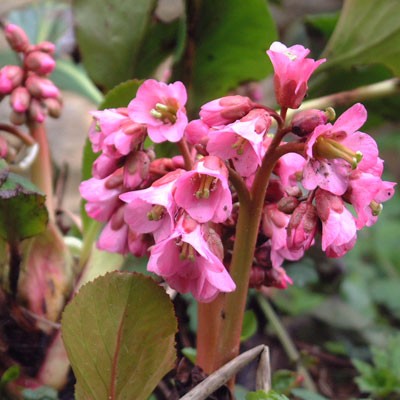
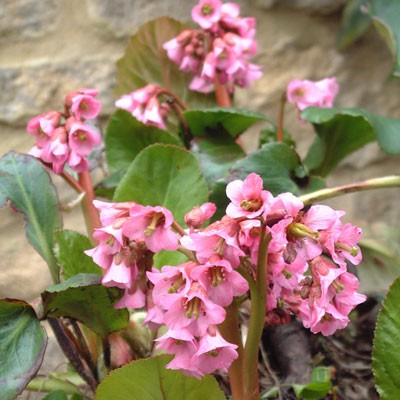
Potsize - 1L
Bergenia 'Silberlicht'. A relatively new addition to the Bergenia family having been raised in 1982 by H.Klose. It thrives in sun or shade even in quite dry conditions and produces valuable ground cover of handsome bronze tinted leaves. Its real beauty is shown when in flower late in the Spring. Flowering stems are tall and pink carrying flowers in a sugar pink hue. Discount of 25p per plant for quantities of 3 or overLinks
Bergenia Compared
Botanical Style Photographs
-
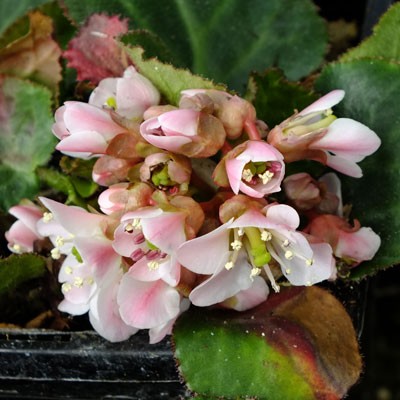
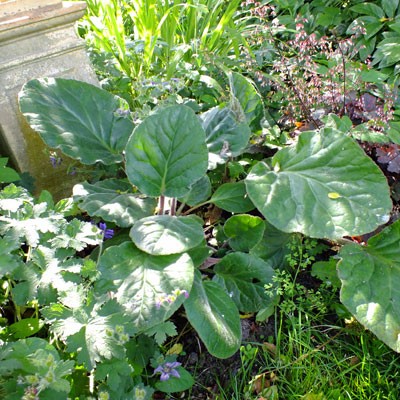
Potsize - 1L
Bergenia ciliata. The leaves of this choice species are large- up to 30cm across, well rounded and covered in tiny hairs. It makes a large clump, but considerably less dense than most bergenias. The flowers are pink, held erect and slightly fragrant. Slightly more tender than the more robust species and deserving of a spot with some shelter, especially for the flowers. Foliage will die back somewhat in winter. Leaves colour red in Autumn. Native of Afghanistan and Tibet. Prefers cool moist shade.Links
Bergenia Compared
Botanical Style Photographs
-
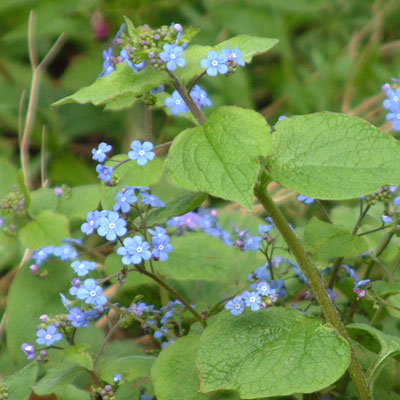
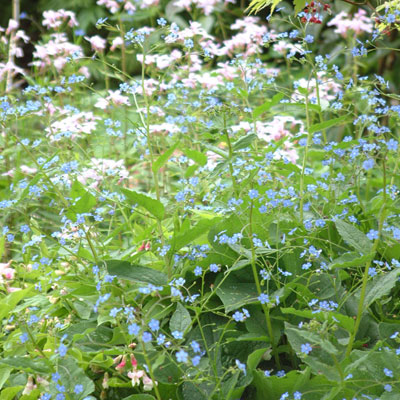
Potsize - 1L
Siberian Bugloss. A brilliant perennial which grows well in dry shady places, but will excel in most reasonable positions. Large heart-shaped felty green leaves make a stout clump topped in Spring with a cloud of tiny forget-me-not flowers. Hardy and reliable and one of those plants that ought to find a place in every garden. 30-45cmDiscount of 25p per plant for quantities of 3 or overLinks
Brunnera Compared
Botanical Style Photographs
-

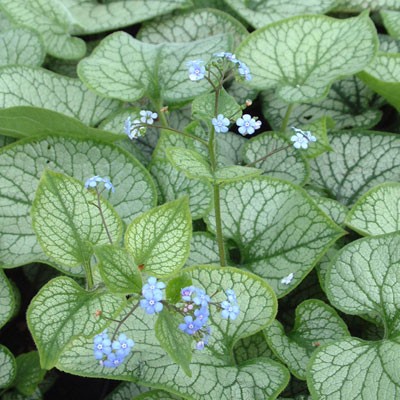

RHS AGM
Potsize - 1L
Brunnera macrophylla 'Jack Frost'. Coarsely hairy, heart-shaped leaves are heavily silvered and picked out by dark green margins and veins, making fascinating patterns not unlike an intricate cathedral window. A picture from Spring to Autumn especially when given shade and adequate moisture to prevent scorching in high Summer. The Spring display is further enhanced by an airy cloud of icy-blue forget-me-nots on stems decorated with smaller but similarly marked leaves. 50cmLinks
Brunnera Compared
Botanical Style Photographs
-
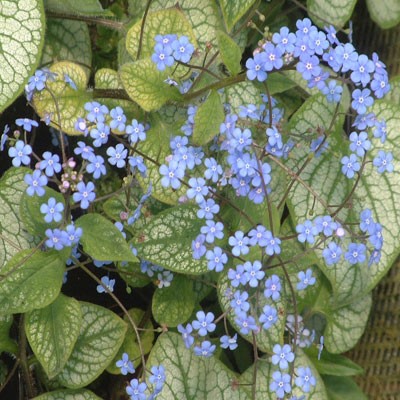
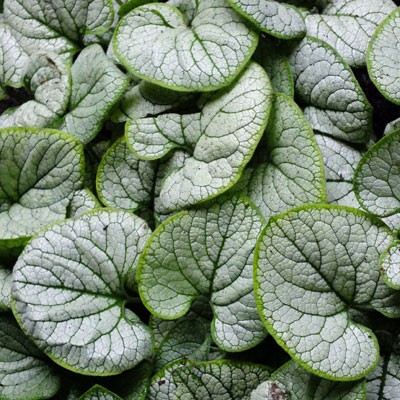
Potsize - 1L
Brunnera macrophylla 'Silver Heart'. A new introduction (2012) by Spilsbergen-Willemsen from the Netherlands. Superficially like a more silvered version of the popular Jack Frost, but generally considered to be a tougher more sun resistant variety on account of the thicker character of the leaves, which can also grow larger in size. Coarsely hairy, heart-shaped leaves are heavily silvered and picked out by dark green margins and veins, making fascinating patterns not unlike an intricate cathedral window. A picture from Spring to Autumn especially when given shade and adequate moisture to prevent scorching in high Summer. The Spring display is further enhanced by an airy cloud of icy-blue forget-me-nots on stems decorated with smaller but similarly marked leaves. 50cm plusLinks
Brunnera Compared
Botanical Style Photographs
-
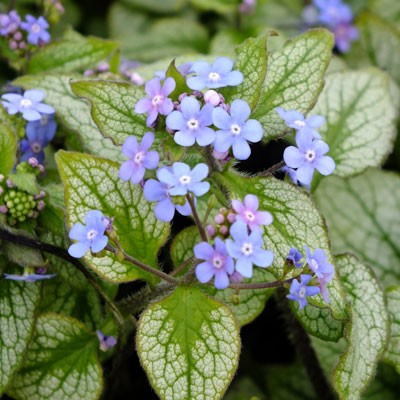
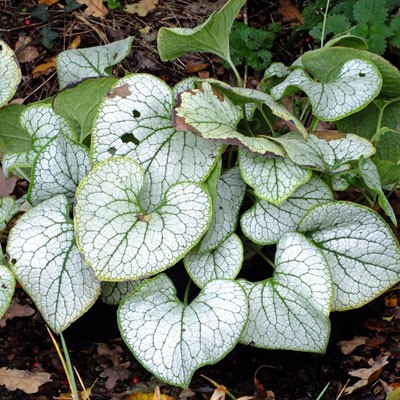
Potsize - 1L
Very similar to the ever popular Brunnera 'Jack Frost' except that it is a little whiter and has an elongated pointed tip to the leaf. Leaves are a lovely silver with the veins picked out in green forming a dense mound in any situation that is out of direct sun. Clouds of blue forget-me-not flowers in Spring.Links
Brunnera Compared
Botanical Style Photographs
-
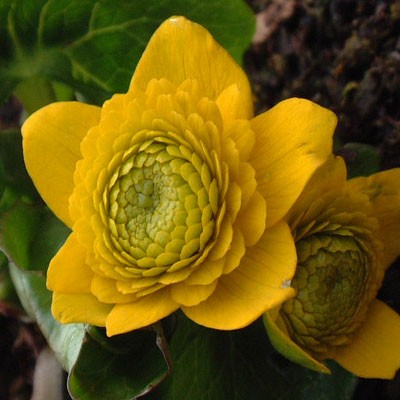
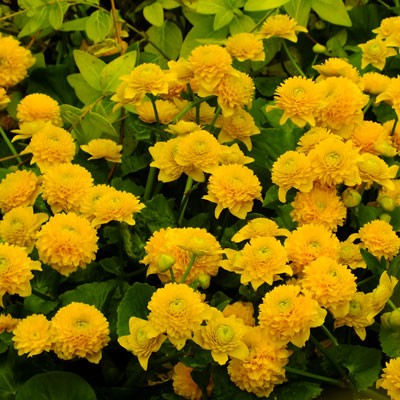

Bee Friendly
Potsize - 1L
As Marsh Marigolds go this one is relatively compact in growth, shorter in all its parts. However it is the flowers that are the chief attraction. They start off looking like a normal Marsh Marigold with the tightest anemone centre you could imagine. Then, as the flowers age, the centre petals grow out until you have a full blown miniature pom-pom dahlia of a flower in rich glowing gold. 30cm spread. Marsh Marigolds are amongst the first flowers of Spring, flowering throughout the month of April.Discount of 25p per plant for quantities of 3 or over -
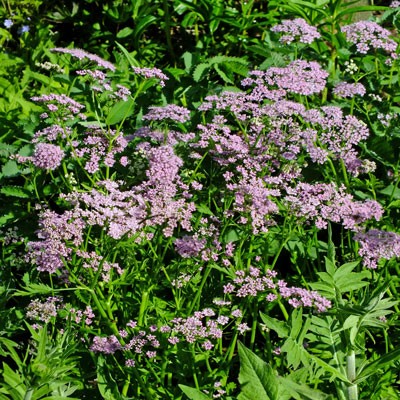

Potsize - 1L
Chaerophyllum hirsutum 'Roseum'. A stout Umbellifer with quite a distinctive colouring. The leaves are soft and hairy in a similar manner to Sweet Cicely and apple green in colour. The flowers are sugary pink in close umbels, tighter than a Cow Parsley. If happy it can make a substantial clump, 2ft or more in leaf alone. Best with moisture. This plant naturally exists in a spectrum of forms from a barely blush to a strong sugar pink. This form is at the strong end of this spectrum. There are some things that fundamentally split marriages, deep unbridgeable divides that can never be healed. This plant is one of those - Dawn thinks it's just lovely, whereas I think the pink is just a bit pink for the oh so green leaves. Maybe its a girl-boy thing. I'm sure we'll get over it.Links
Botanical Style Photographs
-

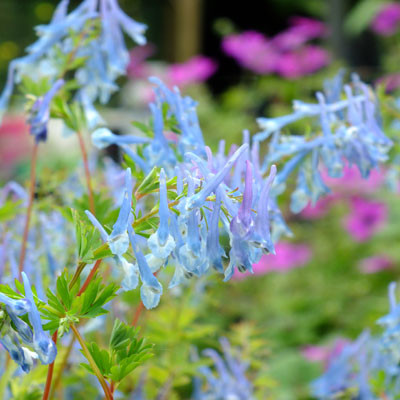
Potsize - 1L
A cross between Corydalis fleuosa and Corydalis omeniana from Ian Young's garden in Aberdeen. Vigorous clumps of limey, chartreusy-green juicy fern-like foliage over which come the strongly scented sky-blue flowers. Like Corydalis elata, but smaller and colouring only very slightly in the stems. Wintergreen and very hardy if grown in a moisture retentive soil which is not over wet and doesn't dry out in the Summer. Divide every three years to maintain vigour and encourage the best flowering. Flowers from Spring until June. 30cmLinks
Corydalis Compared
-
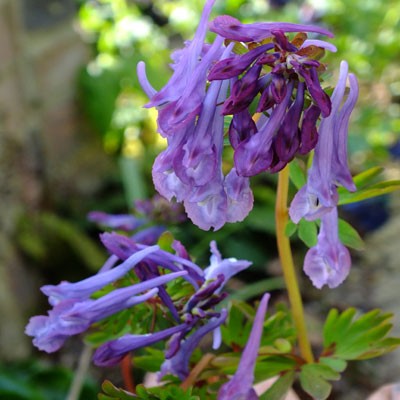

Potsize - 1L
Corydalis 'Spinners'. Distinguished by having flowers that age purple form a blue start earlier in the year. The flowering stems are pretty well upright and carry a distinctive red flush. The foliage mounds up into a ferny bush of fresh appley-green leaves which have a dusky cast in the winter from tiny brown spots. Early Spring. 30*30cm. For moisture retentive soil in shade or half shade. Possibly more evergreen than some.Links
Corydalis Compared
-

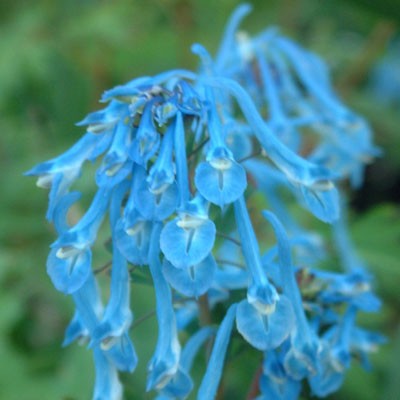
Potsize - 1L
Corydalis 'Tory MP'. This certainly has some Corydalis elata blood in it. The habit is fairly upright with the flowers being held high on tall stems and can come a month later than varieties such as Corydalis flexuosa 'Pere David'. They are a rich blue in colour. I did wonder if this earned its name on account of it being true blue and upstanding, then I read that it came from being true blue and going on and on! - but then again perhaps it owes something to its habit of disappearing from sight over the Summer ! - I'll leave you to draw your own conclusions. Early Spring. 45*30cm. For moisture retentive soil in shade or half shade.Links
Corydalis Compared
-
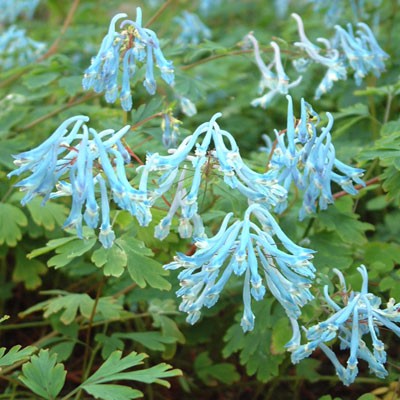
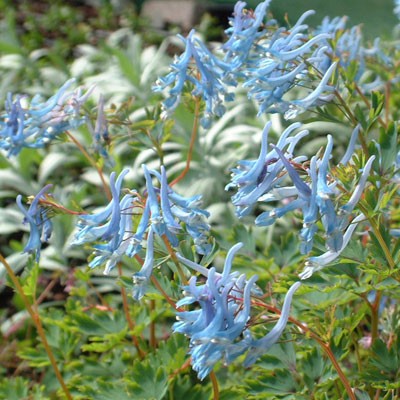 Corydalis flexuosa 'Pere David'
Corydalis flexuosa 'Pere David'Potsize - 1L
Forms mounds of delicate ferny foliage which are topped off with charming spikes of sky blue flowers in early Spring. 30*30cm. For moisture retentive soil in shade or half shade. This variety is very similar to Corydalis flexuosa 'China Blue' but has a faster spreading habit. The stems can take on a red tint and the flowers become darker as the season progresses and moisture levels drop.Links
Corydalis Compared
-
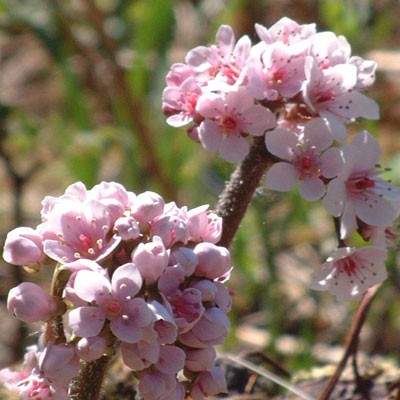
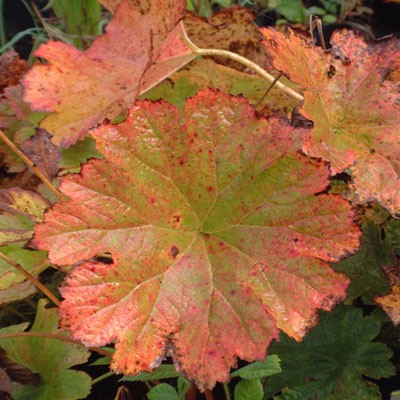
Potsize - 1L
Darmera peltatum (Peltiphyllum peltatum). All through the summer months, the fresh green, broad circular leaves make a bold dense clump before turning lovely scarlet in Autumn. The spring sees large round heads of pink stained flowers rise 3ft high like drumsticks sprouting from the soil. For moist to boggy soil. 125cm tall spreading. Very often planted by the side of a pond, but also suitable for growing in shade, even in light woodland provided there is moisture to be found at the root. The leaves sprout from a network of thick rhizomes that creep over the top of the soil in a dense mat. Discount of 25p per plant for quantities of 3 or over -



RHS AGM
Potsize - 1L
The beautiful Bleeding Heart or Lady-in-the-Bath. Fresh green ferny foliage above which arch stems dripping pink & white flowers like dewdrops. A picture of poise and grace. 3ft in a nice moist soil. The fleshy roots are delving and brittle so its best not disturbed and best sited in a sheltered situation in sun or partial shade with plenty of humus. In hot situations where water might go short at the roots, the plant will take a period of Summer dormancy but will re-emerge the following Spring. Mulching helps to extend the flowering season. Great cut flower and surprisingly scented. Deer and Rabbit resistant, possibly on account of its yellow sap. You know a plant has been loved for years when it has numerous names. For this one try Bleeding Hearts or Ladies-in-the-Bath, Ladies-in-a-boat or Dutchman's Breeches or even Lady's Locket and Lyre Flower. The ladies-in-the-bath/boat reference is only apparent if you take an open flower, turn it upside down and pull the outer petals apart, then it becomes obvious. Discount of 25p per plant for quantities of 3 or overLinks
Botanical Style Photographs
-
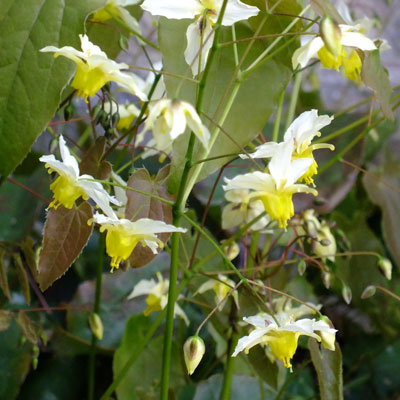

Potsize - 1L
(E. latisepalum x E. pinnatum subs. Colchicum ) One of the first batch of Epimediums into flower. This lovely hybrid resembles Epimedium v. 'Sulphuruem', or more precisely 'Neosulphureum', but on steroids. The flower stems are tall standing well above the foliage to 60cm. They have widely spaced individual flowers that have palest creamy yellow inner sepals and bright lemon horned petals. The new leaves compliment perfectly in a sienna washed pale green. The whole plant is evergreen, retaining a fresh mid green leaf all Winter.Links
Epimedium Compared
Botanical Style Photographs

















































